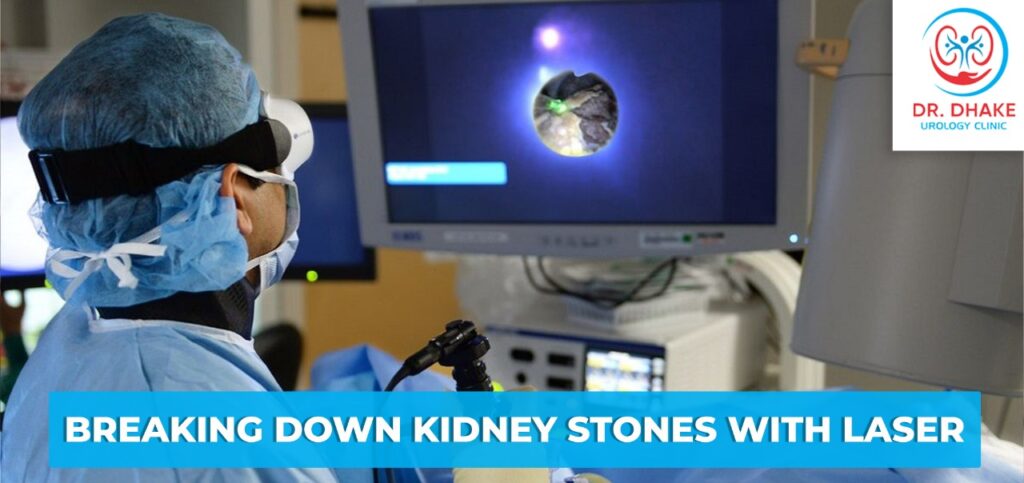
Kidney stones are rather typical. At some point throughout their lives, one in every twenty persons experiences them. They are solid salt and mineral deposits that develop inside the kidneys. Usually, they are tiny enough to pass naturally, but occasionally, if they are too big, the discomfort is too severe to wait for the stone to pass, the stone is impairing kidney function, or the stone is causing too much pain, intervention may be required.
Anyone can acquire a kidney stone, although some people are more likely to do so than others due to illnesses like diabetes, inflammatory bowel disease, and hypercalciuria (high calcium in the urine). More information regarding kidney stones and how laser treatment should proceed.
How do I know that I have kidney stones?
Patients frequently exhibit symptoms like the following:
You have a constant urge to urinate, which causes discomfort, and your urine is murky and foul-smelling. You also experience severe back and side pain, shooting agony down your legs, and fever if an infection is present.
Kidney stones can occasionally remain within the kidney without obstructing the kidney or hurting it.
Kidney stones: how are they found?
A CT scan, intravenous pyelography (IVP), or an ultrasound scan can all be used to find kidney stones.
What is the treatment for kidney stones?
A shockwave machine was frequently employed in the past. To break up kidney stones into smaller bits, this was put over the kidney. The smaller fragments of stones, however, frequently become stuck at the base of the kidney and are ineffectively evacuated from the body. Laser treatment for kidney stones
Kidney stones can now be removed quite effectively with laser therapy. By following the path of the urinary tract, an endoscope—a thin, black tube—in the shape of a camera can be inserted up into the ureter and the kidney. This avoids the need for any cutting throughout the procedure. The surgery is performed while completely unconscious.
The surgeon can see where to point the laser to destroy the kidney stones thanks to the endoscope. The stones can be adjusted to be blasted either into a fine powder or into large shards by the laser. Stones that have crumbled into powder can naturally flow through the urine. A unique small grabbing basket can be used to retrieve the chunky stone shards.
The medical professional could insert a temporary stent in the ureter after the kidney stone has been removed to make it easier for urine to travel from the kidney and into the bladder. Patients can typically return to their regular activities in two to three days. After four to ten days, a ureter stent that was implanted can be withdrawn.
Make an appointment with a professional who will guide you through treatment if you are feeling any of the symptoms stated above along with a high temperature, shivering, and nausea.




